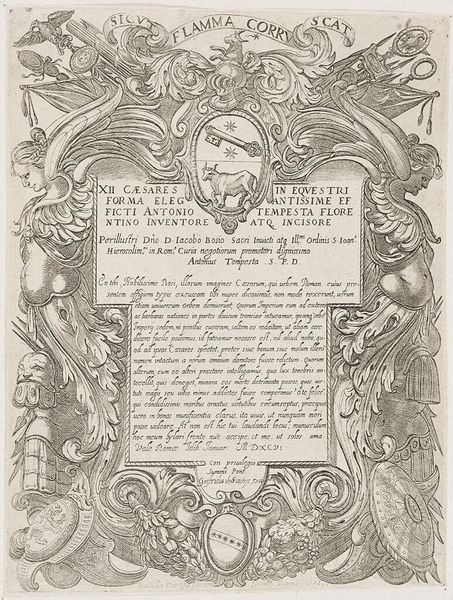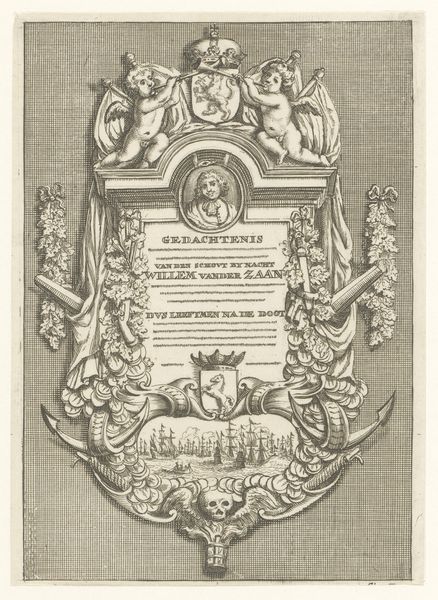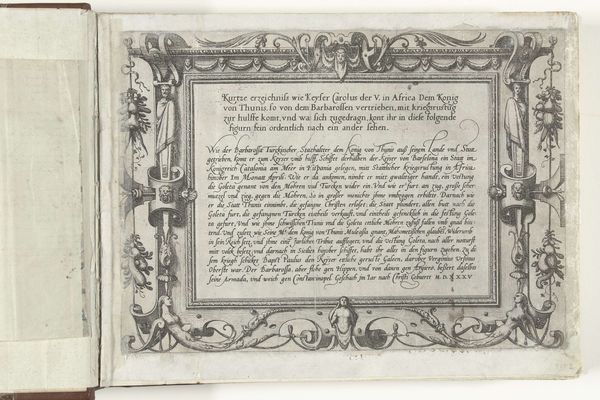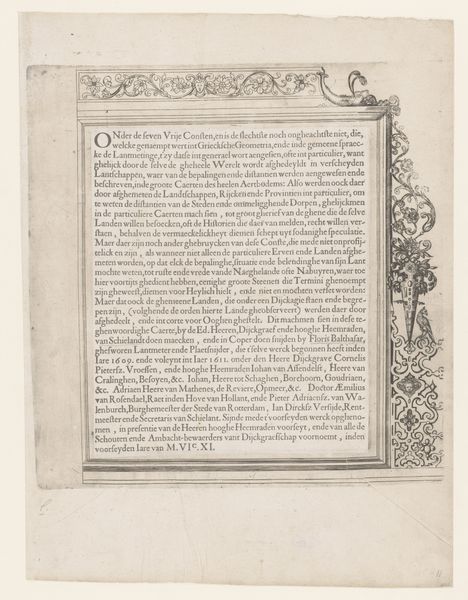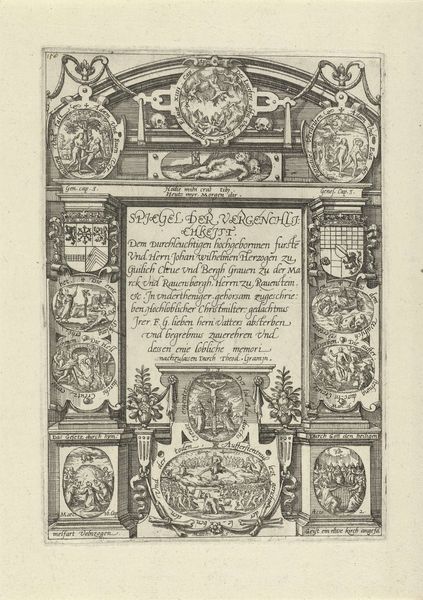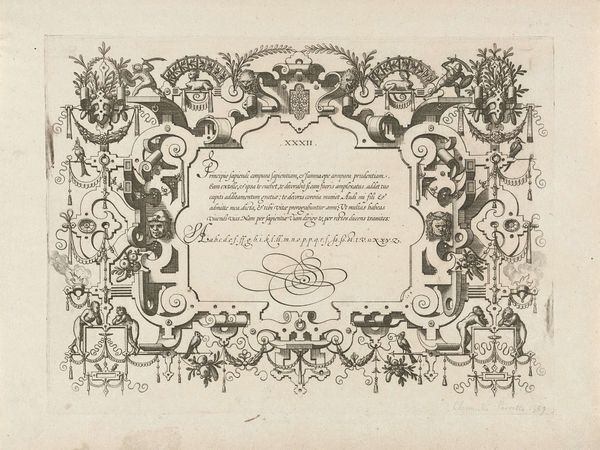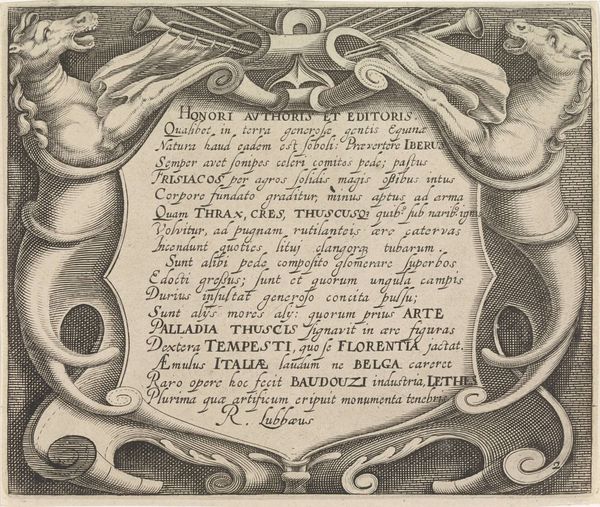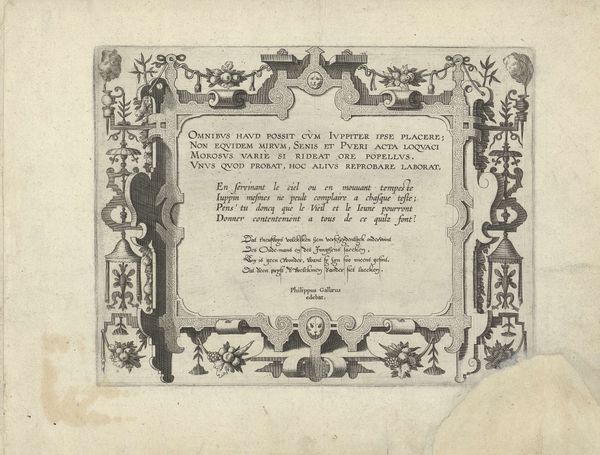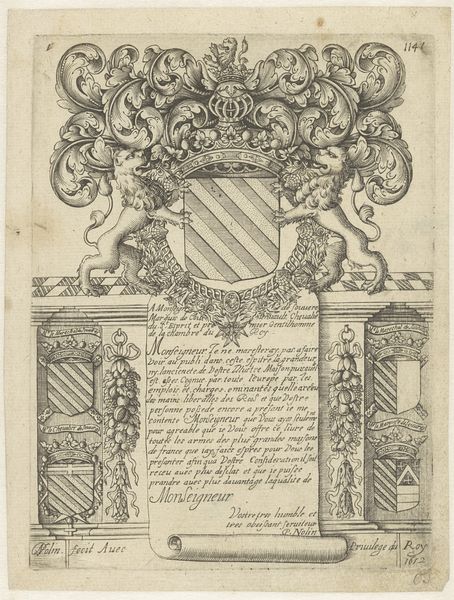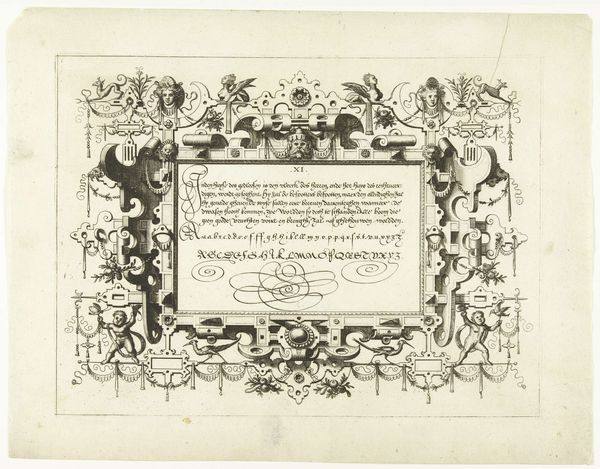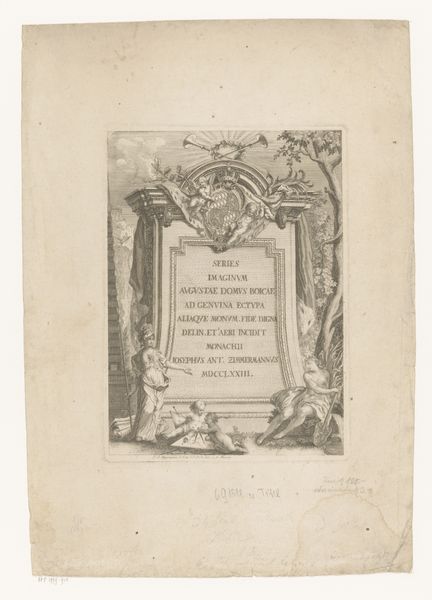
Frontispiece to the series 'The First Twelve Roman Caesars' with the Coat of Arms of Jacopo Bosio 1596
0:00
0:00
drawing, graphic-art, print, engraving
#
drawing
#
graphic-art
#
pen drawing
# print
#
figuration
#
11_renaissance
#
line
#
italian-renaissance
#
engraving
Dimensions: Sheet: 12 3/16 × 9 1/16 in. (31 × 23 cm)
Copyright: Public Domain
Curator: This is the frontispiece to Antonio Tempesta’s series, "The First Twelve Roman Caesars," completed in 1596. It's an engraving, currently held at the Metropolitan Museum of Art. Editor: Striking. It has a somewhat morbid, intricate character—fitting for a collection centered on the Roman Caesars. There’s a strong sense of containment too, wouldn't you agree? All that density packed inside the frame. Curator: The density emphasizes the symbolic richness. The artist meticulously layers allegorical details: armor, angelic figures, foliage, coats of arms. Note the lettering—Tempesta, ever the equestrian artist, characterizes the Caesars “in equestrian form.” Editor: The central cartouche certainly grabs attention, its curved edges softening the strict formality of the title block. It features a bull beneath a prominent key. Bosio's coat of arms, I presume? Keys signify power, access, and the unlocking of secrets or new domains. And bulls, symbols of strength and fertility… What meaning do you discern? Curator: Considering Jacopo Bosio's role as a negotiator within the Roman Curia, these images form an argument concerning legacy and lineage—and earthly power that requires a spiritual seal of approval, shall we say. Observe the rhythmic distribution of light and shadow; this chiaroscuro heightens the sense of drama, but also visually guides us through its structural complexities. Editor: So it functions as a complex emblem. It makes me think about inherited trauma. This period saw profound political, social, and religious upheavals. The Caesars, embodying a similar moment of transition, resonate even today with notions of authority challenged and redefined. Curator: Indeed, these visual motifs invite reflections on transience, transformation, and continuity. Even now, this engraving sparks contemplation on the enduring nature of symbolic languages. Editor: Yes, it reminds me of the powerful stories images can carry—across centuries, influencing and shaped by successive gazes. A dense and dynamic symbolic ecosystem, captured in a single image.
Comments
No comments
Be the first to comment and join the conversation on the ultimate creative platform.
